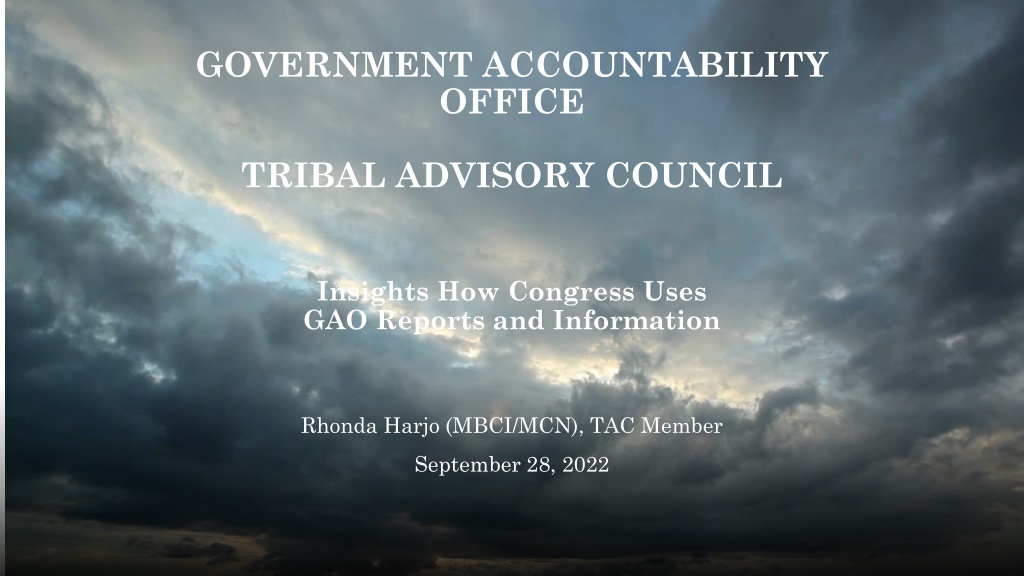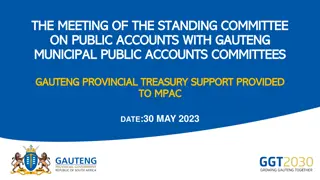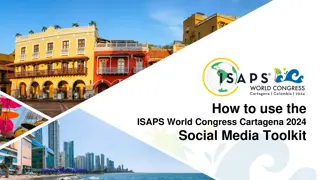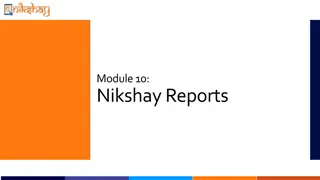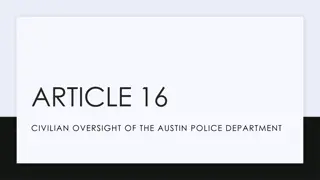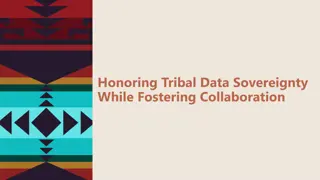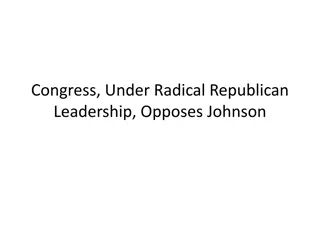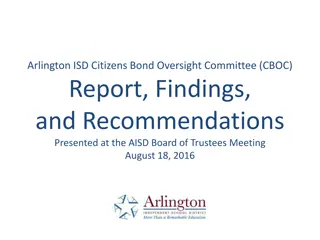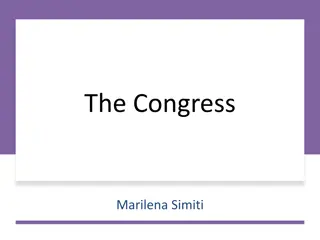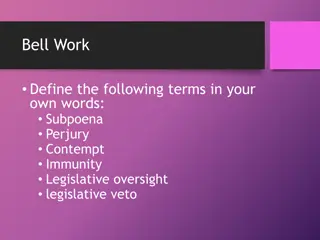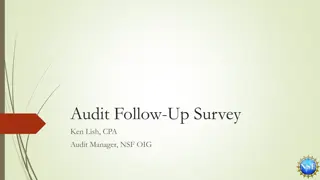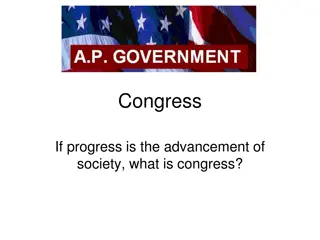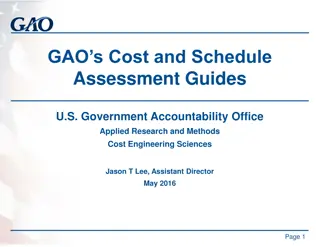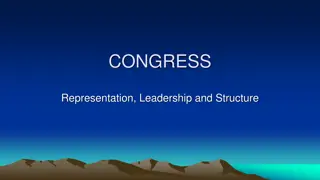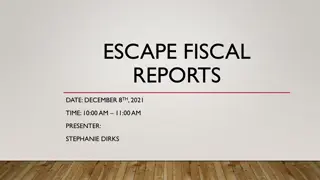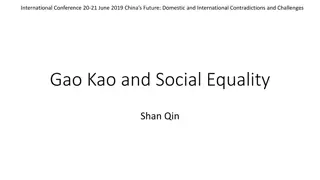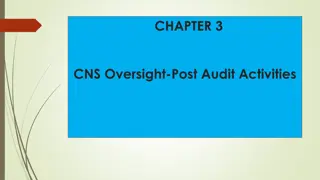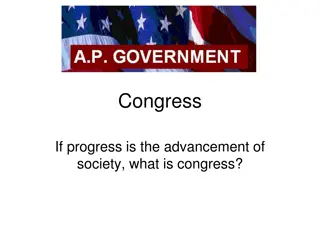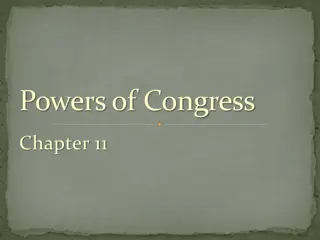Understanding How Congress Utilizes GAO Reports for Oversight
The Government Accountability Office (GAO) serves as the investigative arm of Congress, supporting its constitutional responsibilities by enhancing federal government performance and accountability. This insight provides a detailed look into how Congress uses GAO reports and information for oversight, including the process, relationship dynamics, and follow-up steps involved.
Download Presentation

Please find below an Image/Link to download the presentation.
The content on the website is provided AS IS for your information and personal use only. It may not be sold, licensed, or shared on other websites without obtaining consent from the author. Download presentation by click this link. If you encounter any issues during the download, it is possible that the publisher has removed the file from their server.
E N D
Presentation Transcript
GOVERNMENT ACCOUNTABILITY OFFICE TRIBAL ADVISORY COUNCIL Insights How Congress Uses GAO Reports and Information Rhonda Harjo (MBCI/MCN), TAC Member September 28, 2022
Relationship The Government Accountability Office (GAO) is known as "the investigative arm of Congress" and "the congressional watchdog." GAO supports the Congress in meeting its constitutional responsibilities and helps improve the performance and accountability of the federal government for the benefit of the American people.
Oversight Money spent properly or how was it spent or allocated What is the problem with the program Recommendations for improvement, changes, additional oversight, hearings, or reports Program administered according to statute
Process How does the process begin or get triggered What happens at the end of the review Involvement during review Priorities Follow-up Steps
Process - Getting Started Problem gets attention of Congress ~~Constituents, news articles, reports, hearings, etc. Issues in legislative process ~~Examine before action (stall, more information, gain support, etc.)
Process - Steps Request to GAO ~~Statutes, letters Priority of requests ~~Statutory mandates ~~Committees Chair, Ranking Member ~~Individual Member
Process Involvement During Review Adding requesters Scoping Follow-up meeting
Process Post-Review DRAFT AGENCY RESPONSE HOLD
FINAL REPORT PRESS RELEASE HEARING Process Follow-up SECONDARY REPORT(S) PHASES LEGISLATIVE ACTION
Examine, study, understand, solve a problem GAO Reports Purpose, Use, Development Strategy in legislative process or oversight activity ~~Examine before action (stall, more information, gain support, etc.) Scoping, Tribal consultation, generate interest and information
Examples IHCIA Contract health services (CHSDAs) Indian Tribal Energy and Self-Development Act Telecommunications and Broadband Reports Indian Education Reports Juvenile Justice Reports Advance Appropriations
Follow-up ATTENTION OPEN RECOMMENDATIONS ~~https://www.gao.gov/reportstestimonies/reco mmendations-database HIGH RISK ACTION
